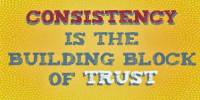There is pressure on workplace well-being programs to provide what workers desire because 98% of workers recently reported that their physical, emotional, and mental well-being is equally as important to them as their compensation.
Unfortunately, new research released today by The Wellbeing Lab and The Australian HR Institute, Growth Faculty, NeuroPower Group, and Pioneera has found that most workplaces are continuing to invest in the least effective well-being tools for workers.
The study, which involved interviewing 1,009 randomly chosen Australian workers in September, discovered three typical errors that many workplace wellness initiatives make:
Promote well-being, don’t just protect mental health. Almost one-third of workers reported feeling uncomfortable talking about mental health (31.9%) or accessing mental health programs (33.1%) at work, compared to feeling comfortable talking about wellbeing (76.2%) and accessing wellbeing programs (73.5%).
Notably, job happiness, organizational commitment, psychological safety, and performance were all statistically more likely to be greater in businesses that frequently provided well-being programs and sporadically provided mental health programs.
How does your workplace well-being strategy normalize moments of thriving and struggle? Is this part of your everyday well-being language?
Invest in well-being tools that work for everyone, don’t just mitigate risks. Employee assistance programs (EAP) remain the most frequently provided support in Australian workplaces (38.2%, up from 29.8% in 2021). Unfortunately, workers continue to report that EAPs are the least utilized support.
EAPs are also the least successful type of help for boosting employees’ feelings of psychological safety, motivation, and well-being. EAPs weren’t any better than doing nothing, in actuality.
What were the most effective forms of workplace well-being support? Leading the charge were wellbeing artificial intelligence bots, wellbeing applications, wellbeing workshops, and wellbeing coaching. Unfortunately, these types of well-being support are offered far less frequently even though they are not more expensive than EAP programs.
How are you balancing your workers’ preferences for mental health and well-being tools and support at work?
Take a systems approach, don’t just expect self-care. The feeling of burnout at work was experienced by more than two thirds of workers (68.5%). This has an effect on employees’ levels of dedication, job happiness, and performance. While many companies have made an effort to improve self-care assistance, leaders and employers need to focus on preventing burnout.
For instance, employees who frequently felt like they were burning out cited unreasonable work demands (93.5%), poor workplace relationships (90.6%), and harassment (87.9%) as the three most common workplace problems. If employers and leaders are serious about reducing burnout, they must work together to address these psychological risks.
















